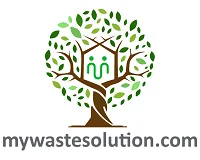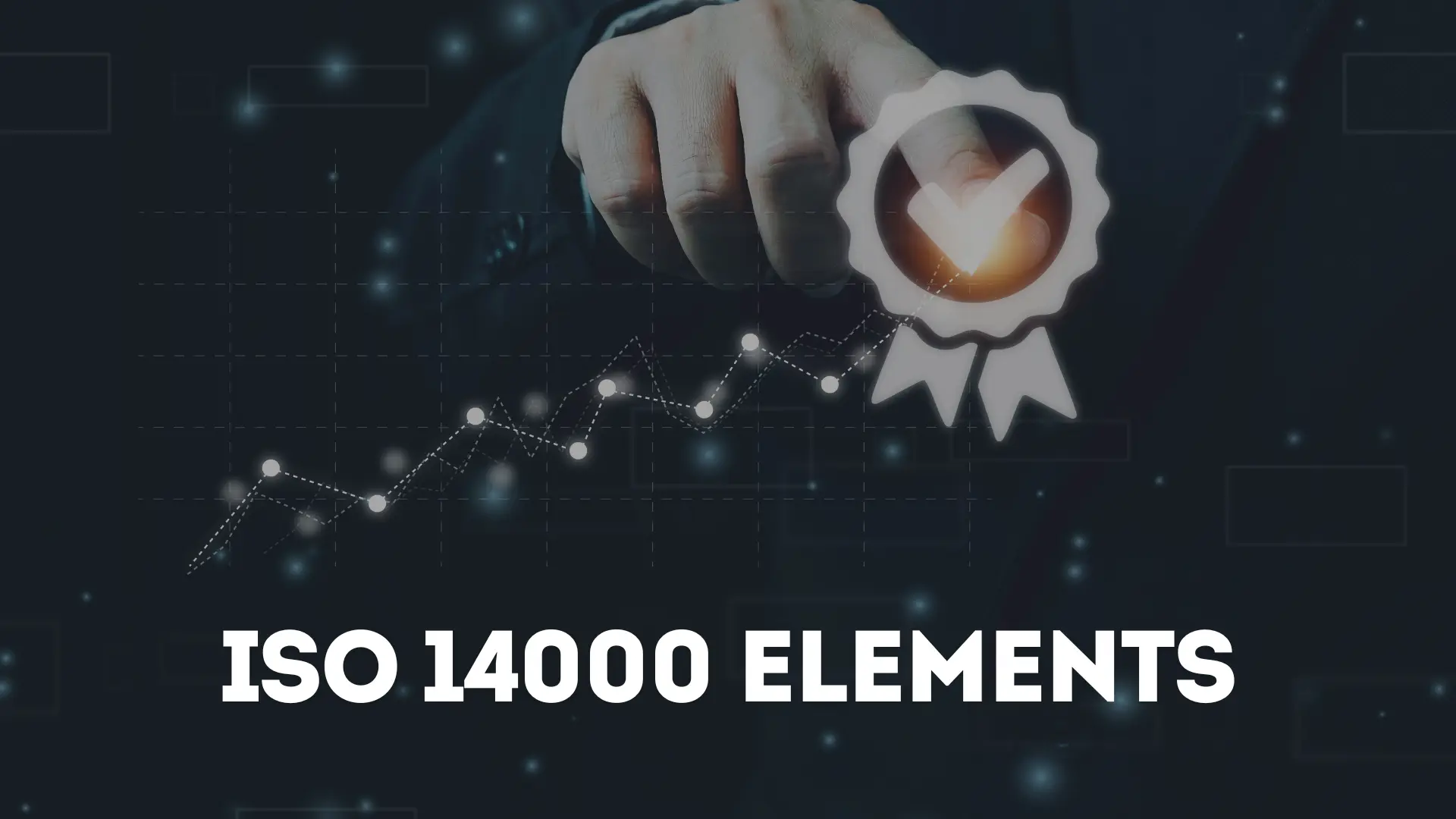Today in this blog we are going to look forward to a brief overview of the EIA Process in India. Environmental Impact Assessment (EIA) is a very effective tool used to assess the significant effects of a development proposal or projects related to the environment. If you are looking forward to starting any development project in India, you are at the right place! This blog will help you to know about the EIA process in India in detail.
What is the EIA process?
To know about the EIA process in India we need to understand what do you mean by EIA. EIA stands for Environmental Impact Assessment. UNEP (United Nations Environment Programme) defines Environmental Impact Assessment (EIA) as a tool used to identify the environmental, social and economic impacts of a project prior to decision-making. In following articles I will discuss different aspects involved in EIA and how they affect EIA process in India
What are the aims and objectives of an EIA in India?
As we understand the importance of the EIA process in India we should now also understand their goals. Now we’ll see what are the objectives of an EIA and why do we perform these types of assessments? It will help you to understand the principles of eia that helps to determine scope of eia.
Two categories can be used to separate the EIA’s goals and objectives. The immediate goal of an EIA is to provide information to the decision-making process by highlighting any potential environmental hazards and repercussions of development projects. EIA’s overarching (long-term) goal is to support sustainable development. By ensuring that development proposals do not jeopardize vital ecological and resource functions, as well as the health, way of life, and livelihood of the communities and peoples who depend on them.
The immediate goals of EIA are to:
- enhance the proposal’s environmental design;
- ensure that resources are used effectively and wisely;
- choose appropriate actions to lessen the proposal’s potential negative effects; and
- support informed decision-making, including establishing the environmental terms and conditions for implementation.
The long-term goals of EIA are to:
- maintain priceless resources, natural regions, and ecosystem components;
- protect human health and safety;
- prevent permanent changes and major environmental harm; and
- enhance the social aspects of the proposal.
EIA Process in India
The EIA process in India has changed according to the different time intervals. There are three distinct periods in Indian history where environmental impacts have been taken into account when making decisions about development. Let’s have a look at the EIA process in India and learn how the EIA legislation process changes according to time. How EIA is necessary because of its long history. Also we will see how EIA methodology changes with time.
Before 1972
India has been pursuing a policy of rapid technology-based economic growth since its independence in 1947. It didn’t fully take into account how the ecosystem was being damaged during the process. The only environmental factor in 1972 was the direct financial cost of the face value of the resources affected (like forest timber). Long term and the total cost was not taken into account.
1972 to 1980
In India, an Environmental movement was launched after the Stockholm conference and in the same year the National Committee on Environmental Planning and Coordination (NCEPC) was established. The environmental effects of development projects have been a focus of many complicated national issues that NCEPC has tackled. The most famous of these was the Silent Valley Project, which was eventually abandoned to save the rich ecological resources of that region.A straightforward process was used. A special task team made up of environmental experts looked at the projects that drew criticism and controversy from the public. Both the project’s feasibility study report and the special task force report were taken into consideration when deciding whether to move forward with a project.
Present (Since 1980)
The Department of Environment (DoE) was founded in 1980. One of the main duties is to conduct environmental assessment of development projects. From 1980 to the present, federal environmental legislation. The Forest Act of 1980, the Environment Protection Act of 1986, and the Air (Prevention and Control of Pollution) Amendment Acts were still in effect (1981 and 1987). Implementing the EA process is the responsibility of the DOE’s Impact Assessment Division (IAD). IAD, which has a diverse workforce, carries out this task with the aid of an inter ministerial appraisal committee made up of specialists from related fields, such as ecology, forestry, environmental sciences, instrumentation, pollution control, civil and mining engineering, etc. Screening, scoping, progress reports, interim and final EI report preparation, review of the final EI report, and decision making are the main steps in India’s EA procedure. They are described in the following paragraphs.
Explore Environment Management System Solutions
Find top machinery, plants, tools, resources, companies, and consultancy for comprehensive EIA Solutions.
Various components of EIA process in India
There are various key elements of the EIA process in India. These components help illustrate the need for EIA. So let’s look towards EIA process in India which has following components of the environment:-
Air environment-
- Predicted and actual ambient air quality.
- Weather information, such as wind speed, direction and humidity etc.
- The projected amount of emissions.
- The area’s exposure to the emissions.
- Air quality standards and need to control pollution.
Water environment-
- Water resource effects of the proposed project.
- The quality and quantity of surface and ground water resources that are already present in the area.
Noise environment-
- Level of actual and anticipated noise.
- Approaches to reduce noise pollution.
Biological environment-
- Possible harm resulting from the project, including damage from emissions, effluents and landscaping.
- Impact zone flora and fauna.
- Biological stress (prediction).
Land environment-
- Effects and impacts on heritage sites and historical monuments.
- Study of the project’s potential negative effects and the features of the soil, the use of the land and the drainage pattern.
Steps of EIA Process in India
So, there are following steps in the eia Process in India which are described below. Also take a look at the eia process flowchart.
Generalized EIA Process Flowchart (UNEP, 2002)
Struggling with Environmental Management System issues? Connect with top consultants specialising in EIA.
Connect NowScreening:
The first stage of the EIA process in India is screening, which leads to a crucial decision on the assessment, namely whether to do it (based on the likely significant impacts) or not (in the anticipated absence of such impacts). In order for all projects to follow the same process, screening must adhere to precise guidelines that are frequently outlined in legislation. The eia screening process helps to determine the project, development or initiative’s level of Impact is an essential aspect in conducting an EIA.
What approaches do exist in the EIA process in India?
We can find out that there are two fundamentally different approaches for EIA screening-
- An environment centered approach which is based on judgment of likely significant impact on the environment from a proposal and
- A development centered approach which is based on the size and/or type of development.
Also, besides these two there is also a third option, that is being a hybrid of these two.
Scoping:
Early in the project cycle, scoping takes place concurrently with pre-feasibility studies and outline planning. Perhaps the most significant phase in an EIA is scoping, which is the process of identifying the most serious environmental issues. Scoping is intended to gather the opinions of the many groups, including decision-makers, the local populace, and the scientific community, who are all interested in contributing to the discussion of the issues that should be taken into consideration (Wathern 1988).
There are two reasons why scoping is important-
- First, early problem detection allows for the implementation of mitigating design modifications before costly detailed work is undertaken.
- Second, to guarantee that thorough prediction work is only done for crucial concerns.
Prediction and Mitigation:
The EIA process in India, work on the prediction process can begin after the scoping exercise is finished. The key impacts to be researched have been determined. The EIA’s primary phase is this stage. At the scoping stage or earlier, a number of significant possibilities were probably put out, and it’s possible that each one needed its own prediction study.
Without first determining the extent of the impacts, which should be expressed in monetary terms if possible, realistic and affordable mitigating solutions cannot be suggested. It then becomes crucial to measure the effects of the suggested improvements through additional prediction work. It is obvious that alternatives must be chosen whenever their superiority in terms of environmental impact, economic benefit, or both can be demonstrated.
As the EIA process in India changes over time. After 2006 Amendment the EIA cycle comprises of four stages:
- Screening
- Scoping
- Public hearing
- Appraisal
- Category A projects require mandatory environmental clearance and thus they do not undergo the screening process.
- Category B projects undergo a screening process and they are classified into two types.
- Category B1 projects (Mandatorily requires EIA).
- Category B2 projects (Do not require EIA).
Thus, Category A projects and Category B projects undergo the complete EIA process whereas Category B2 projects are excluded from the complete EIA process.
Public Hearing:
Stakeholders and proponents are invited to participate in a public hearing as a way to voice their concerns and make recommendations regarding a project in order to have an impact making decisions procedure. The Environmental Council typically coordinates it. Protection organization within the project’s sphere of influence, controlled by an independent committee.
The majority of public hearings are heavily attended and continue for around five hours. In one instance, 600 persons could be found at the conference.
Chiefs,community representatives, public servants, and the proponent’s representatives were among them.
Appraisal:
Within sixty days following the filing of the final EIA Report, it refers to the full review by the EAC and SEACs of the application, EIA Report, results of public consultations, and the public hearing proceedings. The concerned Appraisal Committee can, following careful consideration, either recommend to the regulatory body that the environmental clearance requested be granted or rejected, along with the reasons why.
Find and connect with leading companies specialising in EIA solutions.
Get Connected Today
Principles of EIA process in India
The entire EIA process in India is governed by the following eight guiding principles. They are as follows:-
Participation:
The procedure should offer suitable chances for informing and including the interested and affected publics, and it should expressly take into account their suggestions and worries in the documentation and decision-making. It is crucial that interested parties have appropriate and prompt access.
Transparency:
The procedure should contain clear, understandable requirements for EIA content, guarantee public access to the information, describe the variables considered in decision-making, and admit limitations and challenges. EIA assessment decisions should be transparent and easy to access.
Efficient:
The Process should place the least amount of financial and time demands on participants and proponents while still achieving the goals and standards of an EIA.
Accountability:
The decision-maker should consider all relevant factors before making a choice that will adequately safeguard the environment and the well-being of the community.
Decision-makers ought to take accountability for their choices and actions.
Credibility:
The procedure must be conducted with professionalism, strictness, fairness, objectivity, impartiality, and balance, and it must be open to independent inspection and verification.
Cost-effectiveness:
The procedure should accomplish the EIA’s goals within the constraints of the information, time, resources, and methodology at hand.
Integrated:
The procedure should take into account how social, economic, and biophysical factors are interconnected.
Practicality:
The process should result in information and outputs which assist with problem solving and are acceptable to and able to be implemented by proponents.
It is crucial to have information and outputs available for planning and decision-making.

Explore the Best Environmental Management System Machinery and Plants for your Industrial Needs.
Connect TodayImportant features of the 2006 Amendment to EIA Notification
- The Environmental Impact Assessment Notification of 2006 divided the development projects into two groups, namely Category A (national level appraisal) and Category B, which decentralized the environmental clearance projects (state level appraisal).
- At the national level, “Category A” projects are evaluated by the Impact Assessment Agency (IAA) and the Expert Appraisal Committee (EAC), whereas Category B projects are informed at the state level.
- The State Level Expert Appraisal Committee (SEAC) and the State Level Environment Impact Assessment Authority (SEIAA) were established to approve Category B processes.
EIA Act 2020
The draft Environmental Impact Assessment (EIA) notification, 2020 released on March 23, 2020 by the Union Ministry of Environment, Forests and Climate Change (MoEF&CC) has seen many objections to its clauses and averments for violating several provisions under the Environment Protection Act (EPA), 1986.
A draft of the 2020 EIA Notification has been made available. EIA Notification 2006 will be replaced by EIA Notification 2020 after it is published in the Official Gazette. EIA has made headlines when EIA notice 2020 was created since one of the changes will remove public consultation from a number of operations (Put under Category B2).
Here are a few important terms/agencies concerning EIA notification 2020:
- Accredited Environment Impact Assessment Consultant Organization (ACO)
- Central Pollution Control Board
- Certificate of Green Building
- Corporate Environment Responsibility
- Eco-Sensitive Area/ Eco-Sensitive Zone
The Draft EIA Notification has some advantages. First, it suggests creating a Technical Expert Committee to classify or reclassify projects based on scientific principles.The classification of projects is now done based on the “spatial extent of potential consequences on human health and natural and man-made resources,” however this is a change. Second, it shortens the time required to make a final judgement on whether to grant or reject an EC or EP from a hundred and five days to ninety days following the submission of the final application and all supporting paperwork. Third, it includes language allowing an appeal against the EC or EP grant to be made to the National Green Tribunal within thirty days of the regulating authority’s decision. This should be seen as a step in the right direction against the regulating authority’s potentially arbitrary decision-making process.
Role of Stakeholders in the EIA process
Let’s look towards the role of stakeholders in eia process. An EIA process in India typically involves a variety of stakeholders, including:
- the “individuals, groups, and communities” who will be impacted by the proposal;
- the project proponent and other beneficiaries;
- government agencies; NGOs and interest groups; and Others, including donors, the private sector, academics, etc.
Any project undergoing an EIA involves three main stakeholder groups:
- the proponent,
- the regulators, and
- the community.
Examples of each of them were provided at the session and each one of them may serve as an incentive to participate in follow-up programmes. Separating the motivations of the follow-proponents from the public’s pressure to undertake it is one area where it can be difficult to do so in practice. Additionally, the results of the EIA follow-up may benefit various stakeholders in varying degrees. The examples that follow are taken from the results of current follow-up programmes.
EIA Legislation Process in India
Let’s learn more about the EIA process in India through Environmental Impact Assessment Notification, 2006. After allowing the public to comment on the draft notice for a year, the Union Ministry of Environment and Forest (MoEF) notified the updated EIA Notification in September 2006. To remedy the shortcomings in the previous EIA Notification, the 2006 version was created (1994). Consequently, the previous Notification has undergone a number of revisions, which the ministry claims were made in response to input from numerous stakeholders.
The New EIA Notification (2006)’s attempt to decentralize power to the State Government is the main distinction between it and the prior one (1994). Previously, the Central Government received environmental clearance for all projects listed in Schedule 1.According to the latest announcement, a sizable number of projects will, nevertheless, be sent to the state for approval based on their size, capacity, and area.
In order to address this, the announcement has included a provision for the formation of an expert panel at the state level, the Environment Appraisal Committees (SEAC).
Although this is a commendable effort to lighten the burden on the federal government, this provision may be abused because state governments frequently actively promote industrialization for their individual states.
Benefits of an EIA process in India
The EIA process in India has provided many benefits to the environment. Let’s have a look at the benefits of eia process.
- It lists the primary and secondary effects that could call for the implementation of expensive pollution control measures.
- EIA is a mechanism that aids in the efficient planning of the use of natural resources (mass and material) and human resources. It has proven useful to both those who are encouraging development and those who are responsible for their authority.
- EIA can help with the site selection by identifying the area most vulnerable to negative effects.
- By minimizing subjectivity and duplication of work, it could cut down on expenses and decision-making time.
- EIA also can help to determine the best location in terms of benefit maximization and reduction of negative consequences.
- When a vast number of sites are examined for acceptability, the findings of an EIA study on a particular site help in determining the general environmental, social or health critical to be used.
Limitations of an EIA process in India
The EIA process in India does have some limitations that need to be overcome. Let’s have a look at limitations of eia process in India:-
- Eia occurs after numerous strategic decisions have been made. As a result, it frequently can only handle a small number of alternatives and mitigation strategies.
- Politics and decision-making paradigms could work against you.
- Uncertainty is a natural element.
- The environment’s behavior is little understood.
- only a brief consultation.
- Quality of data.
- This tool depends on your commitment.
Conclusion
The goal of this study was to know the EIA process in India and also we have explored the key legal framework of the Draft EIA Notification that the Ministry released on March 23, 2020, which caused a nationwide uproar.In this article we have seen EIA Process in India, Principles of EIA Process in India, Objectives, benefits and also limitations. Through this article, we can understand how the process has been adopted in India. Thus, to maintain the balance between development and conservation of environmental resources, we need to follow the EIA process in India. Connect with our EIA Consultants to assess the environmental impact of developmental activities.
FAQs:
Question: How does eia help in sustainable development?
Answer: In order to promote environmentally sustainable development, environmental considerations are included into project planning and decision-making through the Environmental Impact Assessment (EIA) process. Best-practice EIA helps to build the groundwork for environmentally sustainable initiatives by identifying environmental risks, reducing conflict through encouraging community involvement, and minimizing harmful environmental effects. For more information on sustainable development, connect with our sustainability consultants here.
Question: What is the purpose of the screening step of eia?
Answer: Screening is done to determine which proposals need an EIA and to weed out the ones that don’t. In order to ensure that any EIA assessment is proportionate to the significance of the issues raised by a plan, it is important to consider the form or level of the study.
Question: What is essential in an eia?
Answer: An EIA should make it possible for decision-makers to evaluate the effects of a project at every stage. It should also enable the general public and other interested parties to express their opinions and offer suggestions regarding the proposed development. Additionally, for an EIA to be genuinely useful, it must contribute to and enhance the project design so that environmental and socioeconomic factors are integral to it.
Question: What is eia draft 2020?
Answer: In India, the adoption of the Draft EIA Notification 2020 by the Ministry of Environment, Forest and Climate Change has triggered several debates over its problematic implications. The Draft EIA Notification normalizes ex post facto clearance, which allows construction or operation of the project without a prior environmental clearance. Further, it is silent over the project’s transboundary impacts and exempts projects within 100 km of the border areas from public consultation. Thus, the Draft EIA Notification violates the environmental law principles provided under domestic and international laws by restricting adequate scrutiny of projects.
Question: What is the current status of India’s Environment Impact Assessment Draft, 2020?
Answer: The government of India even requested suggestions for its modification when the EIA draft 2020 was first proposed. However, due to the COVID pandemic, the issue was not covered by the media, and the opposition gradually subsided.
Few revisions in the EIA 2020 Draft raised significant environmental concerns, therefore approving it could be bad for the environment and biodiversity while being advantageous to commercial organizations.
Question: What do you mean by impact analysis and mitigation in the EIA Process?
Answer: Impact analysis: This EIA stage identifies, forecasts, and evaluates the significance of the proposed project’s anticipated environmental and social impacts.
Mitigation: In the EIA process, this step suggests ways to lessen and/or prevent the potential negative environmental effects of development activities.
Question: What is the Importance of the EIA Process in India?
Answer: The importance of EIA Process in India:
- EIA is a useful tool for responsible environment management.
- According to government policy, any industrial project in India must first receive EIA clearance from the Environment Ministry.
Question: What are the methodologies for EIA?
Answer: The methodologies can be broadly divided into five types (based on impact identification strength)
1. Ad Hoc methods
2. Matrices methods
3. Network methods
4. Overlays methods
5. Environmental index using factor analysis
6. Cost/benefit analysis
Question: Who is responsible for the EIA process in India?
Answer: In accordance with the Environmental (Protection) Act of 1986, the Union Ministry of Environment and Forests (MEF), Government of India, promulgated an EIA notification requiring environmental clearance (EC) before expanding or modernizing any activity or initiating new projects. It was decided to do this on January 27, 1994.
Question: What are the types of Environmental Impact Assessment?
Answer: The various types of environmental impact assessments include the following:
- Comprehensive EIA
- Rapid EIA
Comprehensive EIA- All four seasons’ worth of data are included in this.Rapid EIA- This includes the evaluation of information from just one season of the year.











